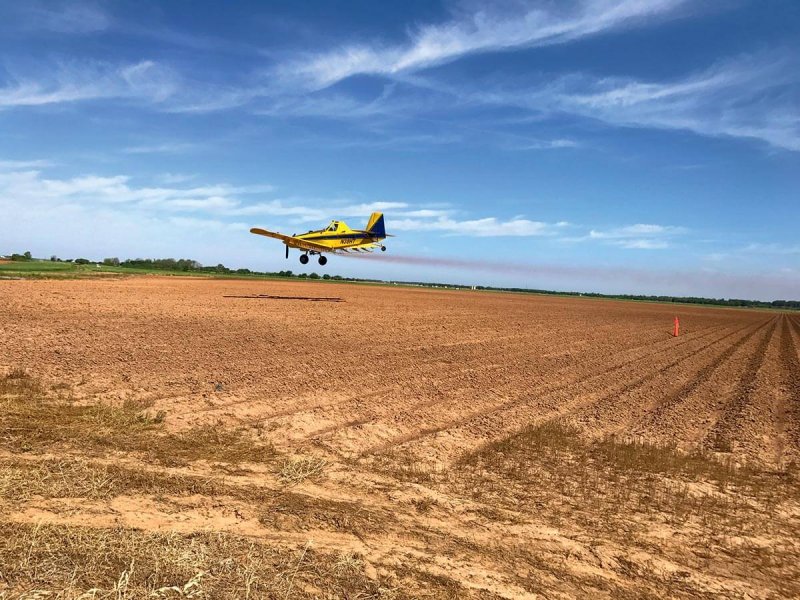Though neither the EPA nor various state agencies could provide reliable statistics on the total number of [pesticide] drift incidents, experts agree that reported cases represent the mere tip of the iceberg.
…
Minimizing it, however, may be possible. Drones can hover close and spray with great precision, and electrostatic spraying uses an electric charge to attract pesticide droplets to target plants. Both technologies are still years away from widespread implementation, but a potential quick fix has emerged out of the USDA’s Aerial Application Technology Research Unit (AATRU) in College Station, Texas. Large-scale farms…typically opt for aerial application over ground-rig spraying, because planes cover huge swaths faster, decreasing the time workers must be sidelined (per EPA regulations that prohibit them from reentering treated areas for up to 72 hours).
Starting in 2013, Daniel Martin, a research engineer at the AATRU, and his colleagues conducted a study to determine how small wing-mounted blades called vortex generators (VGs)—intended to increase pilot control of commercial and military airplanes—might affect the way agricultural aircraft spray chemicals. Martin’s team outfitted planes with VGs and used dye in place of pesticides. In one test, the VGs reduced the amount of drift by 40 to 45 percent.
The GLP aggregated and excerpted this article to reflect the diversity of news, opinion and analysis. Read full, original post: The Perils of Pesticide Drift































